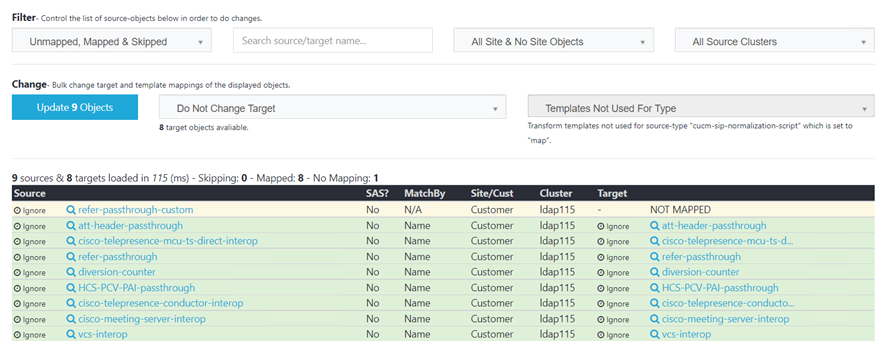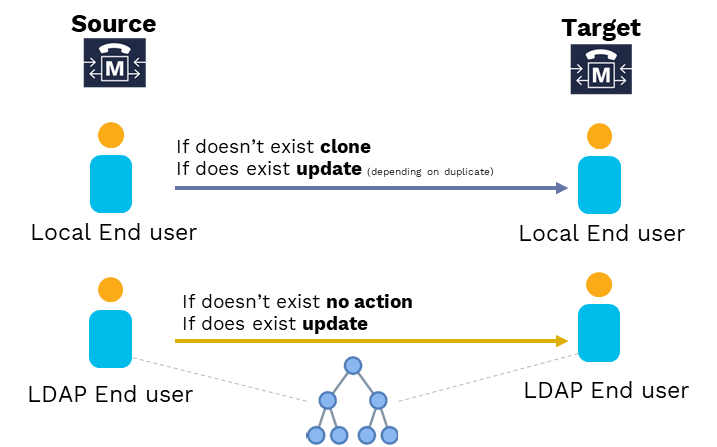Migration Factory - Part 2: Migration Concepts and Features of wrangler_
In the journey of Unified Communications (UC) migration, an invaluable tool in your toolkit is Wrangler_. Following a thorough assessment and planning phase with pre_yarn, Wrangler_ takes the baton next in the migration process. This powerful tool offers unique features that streamline and automate the migration process, making it quicker, more accurate, and less error-prone.
wrangler_ enables partner to move faster than previously thought possible as demonstrated by several real-world examples:
Large Global Enterprise: For one global enterprise with approximately 9500 devices across 35 sites and 8600 users, the data migration process took just four days effort with a total migration duration of 10 days. Despite the system having a considerable amount of invalid data that needed correction.
Large Enterprise: In another case, a large enterprise with around 16000 devices across 50 sites and 12200 users the data migration was done in only three days with a total duration of 8 days.
Large IT Company: In the last case approximately 22000 devices across 40 sites and 11000 users the data migration was done in just 2.5 days the a total duration of 7 days although as lab recreate was done in preparation that helped streamline the process.
These examples underscore the efficiency and power of Wrangler in expediting the migration process, as we typically see a 70% reduction in migration effort for migrating between systems when compared to manual (BAT). The tool's ability to correct invalid data, combined with its focused design on migration, allows engineers, even those new to the tool, to perform migrations swiftly and effectively.
Migration Modes
wrangler_ offers three distinct migration modes to cater to different migration needs:
Clone: This mode creates an exact replica of the source configuration in the target system, retaining all the details . The clone mode minimises manual configuration in the new environment, saving substantial time and effort.
Map: Sometimes, a direct clone might not be the best fit. You might want to transform the source configuration to suit a new dial plan or use a domain manager to push into the target cluster. This where the map mode comes in. It enables you to map source elements to their respective counterparts in the target environment, allowing for customization during the migration.
Template: For large-scale migrations involving multiple sites or clusters, maintaining consistency is crucial. The template mode lets you create a standard configuration template and apply it across the target environment. This mode ensures uniformity, reduces the chances of errors, and speeds up the migration process.
Site Suggestions and Allocation Process
wrangler_ uses an intelligent site suggestion and allocation process that analyses your current configuration, suggest site structures and automatically allocates devices to the appropriate sites that can then be placed into migration batches (site groups).
Target Mappings
Transitioning from an old system to a new one requires meticulous mapping to ensure configurations are not lost. wrangler_’s target mapping feature enables you to link each element from the source environment (Route Partition (PT), Calling Search Space (CSS), Device Pool (DP), Location (LOC), etc.) to its corresponding component in the target environment, ensuring a smooth transition
Validation Rules and Resolutions
Before the migration process begins, wrangler_ checks the validity between the source and target clusters even if different versions. It flags potential issues that exist and has one click resolutions to correct the data prior to loading.
Dependencies and Preload Validation
wrangler_ offers two crucial features for ensuring a smooth migration process:
Dependencies: wrangler_ allows you to view any configuration element and its dependencies. You can preview migration actions, ensuring clarity and predictability.
Preload Validation: wrangler_ performs a sequencing check before loading. This preemptive check ensures no configuration or setting could stop the object from loading into the target environment.
User Synchronization and Migration
For migration to Webex Calling Dedicate Instance (WxC-DI), particularly when users are synchronized from an LDAP directory, it's important to understand how users are migrated. Here, we'll detail the two primary ways users can be migrated within the UCM context.
Creation of Local End Users
When a local user does not exist in the target WxC-DI system, wrangler_ will create a new local end user. This effectively clones the source end user to the target system.
Updating Existing LDAP Syncronised Users
Alternatively, if a user from the source system already exists in the target UC system having been syncronised from LDAP, wrangler_ will update the existing user with the relevant configuration from the source.
Rollback
No matter how well you plan, unexpected issues can still surface during the migration process. wrangler_ comes equipped with a rollback feature, a safety net that can revert the target system to its pre-migration state if needed. This means you can proceed with the migration with confidence, knowing you have a contingency plan in place.
These success stories underscore the power of wrangler_ in ensuring seamless and efficient migration processes, irrespective of the size or complexity of the environment. Stay tuned for the next part in our series where we discuss post-migration steps and best practices.



